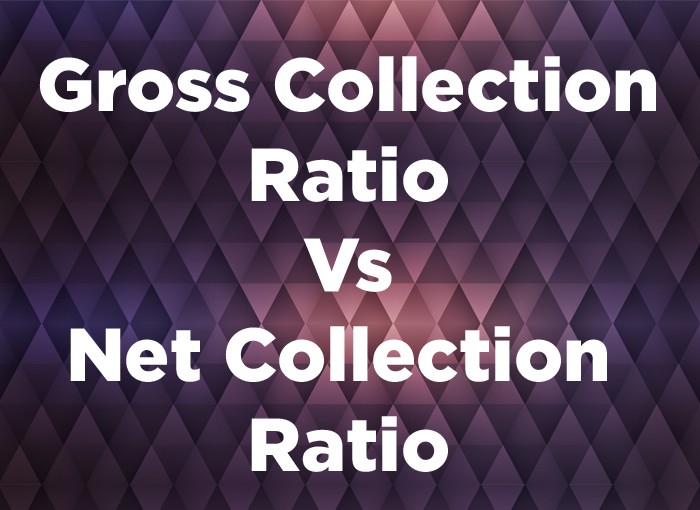Gross Collection Ratio vs. Net Collection Ratio
To keep going, every hospital and medical clinic needs money, which they can use to pay the staff, buy supplies, and maintain their facilities. To ensure that they are financially healthy, medical practices need to use measurement techniques in financial terms called Key Performance Indicators-KPIs.
What are Medical Billing KPIs?
Think of KPIs like a report card for a medical practice’s money management. These measurements help doctors and administrators understand if they’re collecting the money they’ve earned from treating patients. There are seven important KPIs that medical practices use:
- Collections per Visit: How much money is collected for each patient visit
- Contractual Variance: The difference between what’s billed and what insurance agrees to pay
- Days in A/R (Accounts Receivable): How long it takes to get paid
- First Pass Resolution Rate (FPRR): How many insurance claims are paid the first time they’re submitted
- Gross Collection Rate (GCR): The total amount collected compared to what was charged
- Net Collection Rate (NCR): The actual amount collected after adjustments
- Percentage of A/R Older than 60 Days: How much money has been waiting to be collected for more than two months
Out of the above-mentioned KPIs, the gross collection and net collection rates tend to create a lot of confusion when it comes to the calculation of a practice’s income.
Meaning of Gross Collection and Net Collection
Net collections, as pointed out by Investopedia, are those that come into play in medical accounting as far as money collected goes on the agreed-upon fees charged. Net collections are usually lower than net charges (the total amount the provider agrees to accept as payment) and almost always lower than gross charges (the provider’s total invoice amounts before insurance and other adjustments).
Gross collections are simply a provider’s gross income or gross profit margins, the simplest indicator of the firm’s profitability. By definition then, the gross income metric has included the direct cost of producing/creating goods and providing services, but other costs such as those incurred in selling, administering, taxes incurred, and those that have some link to the overall running of business operations did not extend into its accounting.
Calculating Gross Collection Rate (GCR) and Net Collection Rate (NCR)
The formula to calculate GCR and NCR is as follows:
- Gross Collection Rate = Total Payments / Charges *100% (for a specific period)
- Net Collection Rate = (Payments / (Charges – Contractual Adjustments)) * 100%
Gross Collection vs. Net Collection
The net collection in Medical Billing Metrics or Key Performance Indicators (KPIs) in Medical Billing is considered the best indicator for the true income of a practice. It is because, as opposed to gross collection, this gives a better insight to identify the actual status of the provider revenue cycle. A healthy revenue cycle can be maintained by ensuring an above 90% net collection rate. But if net collection falls below this 90 percent mark (after write-offs) in your practice now, it would be wise to conduct an audit on your billing practice.
Since there are no write-offs attached, it is seen as a much weaker KPI than that of net collection. Without eliminating write-offs, refunds, and contractual/non-contract amounts from the calculation, one can never get a sense of what is coming into one’s practice.
The net collection helps to reveal the amount/payment that your practice is collecting from the payer. However, the gross collection rate only shows what your practice allows you to collect. For example, you may have charged $200 but you only collected $175 from your insurance payer due to the agreement/contract that you might have signed.
Here, the $175 is below the gross rate.
Net Collection rate plays a huge role in medical billing as it is the only way to calculate net income from various sources/payers.
Why Are GCR and NCR Essential in Medical Billing?
- Gross Collection Rate: Gives a basic understanding of potential earnings.
- Net Collection Rate: Reveals the actual financial performance and ensures the revenue cycle is efficient.
Examples of Practical Use
- Tracking Revenue: By monitoring NCR, practices can identify delays or issues in the billing process.
- Evaluating Contracts: Knowing NCR helps providers evaluate if contracts with payers are beneficial.
- Setting Goals: Practices can set realistic collection goals based on NCR data.
Improving Your Net Collection Rate
Keeping a strong Net Collection Rate (NCR) is essential for a healthy revenue cycle. Here are some easy steps to improve it:
Make Billing Simple and Accurate
- Double-check claims before submitting them to avoid errors.
- Submit claims on time to speed up the payment process.
Follow Up Quickly
- Don’t wait too long to address overdue payments.
- Keep track of unpaid claims and send reminders to payers and patients regularly.
Train Your Team
- Teach your billing staff the importance of correct coding and proper documentation.
- Ensure they stay updated on the latest rules and guidelines for billing.
Check Your Process Regularly
- Conduct audits to find areas where things can improve.
- Fix problems like delayed claims, frequent denials, or underpayments as soon as possible.
By taking these steps, your practice can better understand where the money is coming from, fix any billing issues, and ensure steady income for long-term success.
Tips for Improving Collection Rates
- Verify insurance coverage before patient visits
- Collect co-pays during visits
- Submit insurance claims quickly and accurately
- Follow up on unpaid claims regularly
- Train staff on proper billing procedures
- Use modern billing software
- Review collection rates monthly
Conclusion
Understanding gross and net collection rates is very useful for medical practices. While both measures are helpful, the NET collection rate gives a more precise indicator of where a practice stands financially. Through monitoring these KPIs regularly, medical practices can be certain they’re successfully engaging with healthy revenue cycle management and patient-centric actions.



